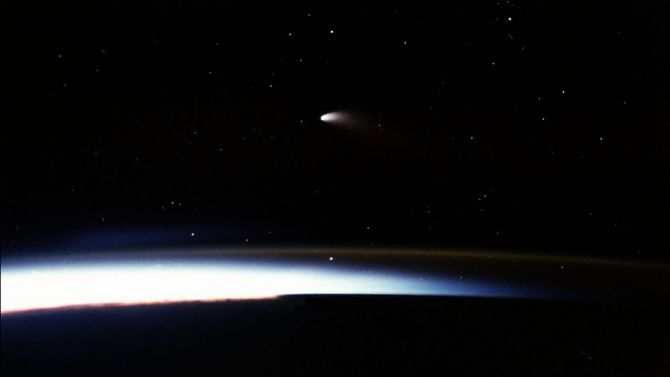
Hale-Bopp
Comet Hale–Bopp is a comet that was one of the most widely observed of the 20th century and one of the brightest seen for many decades. Alan Hale and Thomas Bopp discovered Comet Hale–Bopp separately on July 23, 1995, before it became visible to the naked eye. It is difficult to predict the maximum brightness of new comets with any degree of certainty, but Hale–Bopp met and exceeded most predictions when it passed perihelion on April 1, 1997, reaching about magnitude −1.8. It was visible to the naked eye for a record 18 months, twice as long as the Great Comet of 1811, the previous record holder. Accordingly, Hale–Bopp was dubbed the great comet of 1997.
